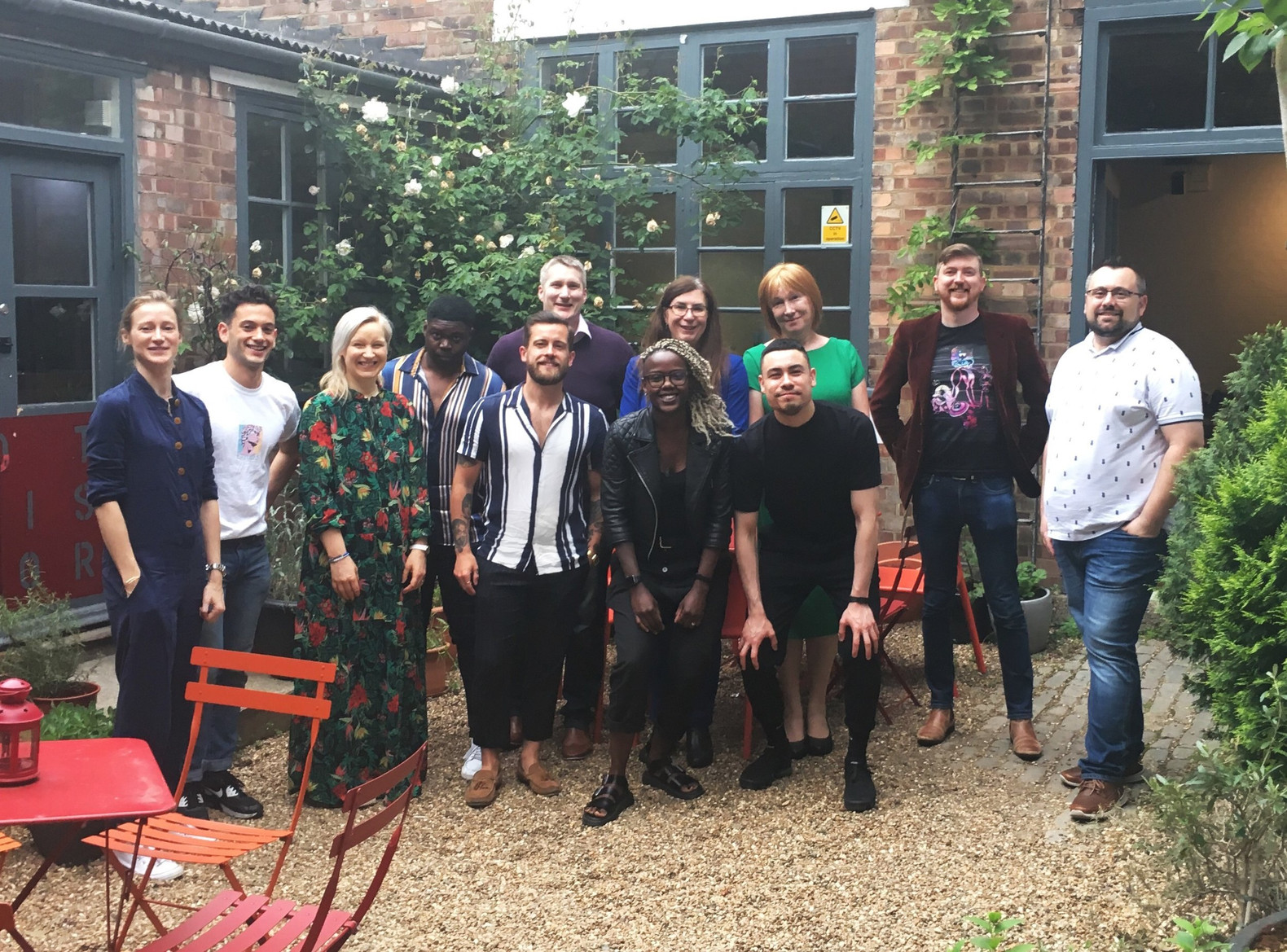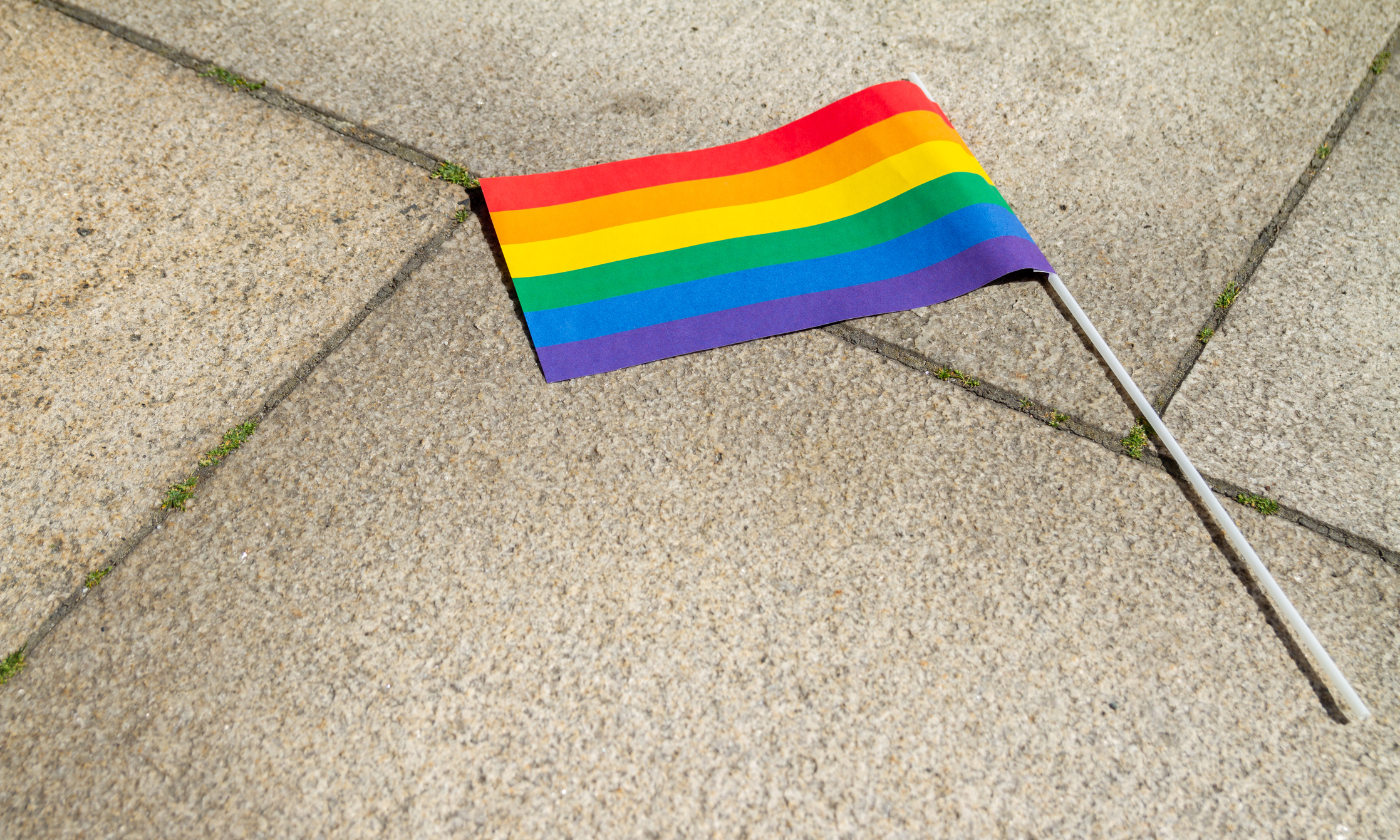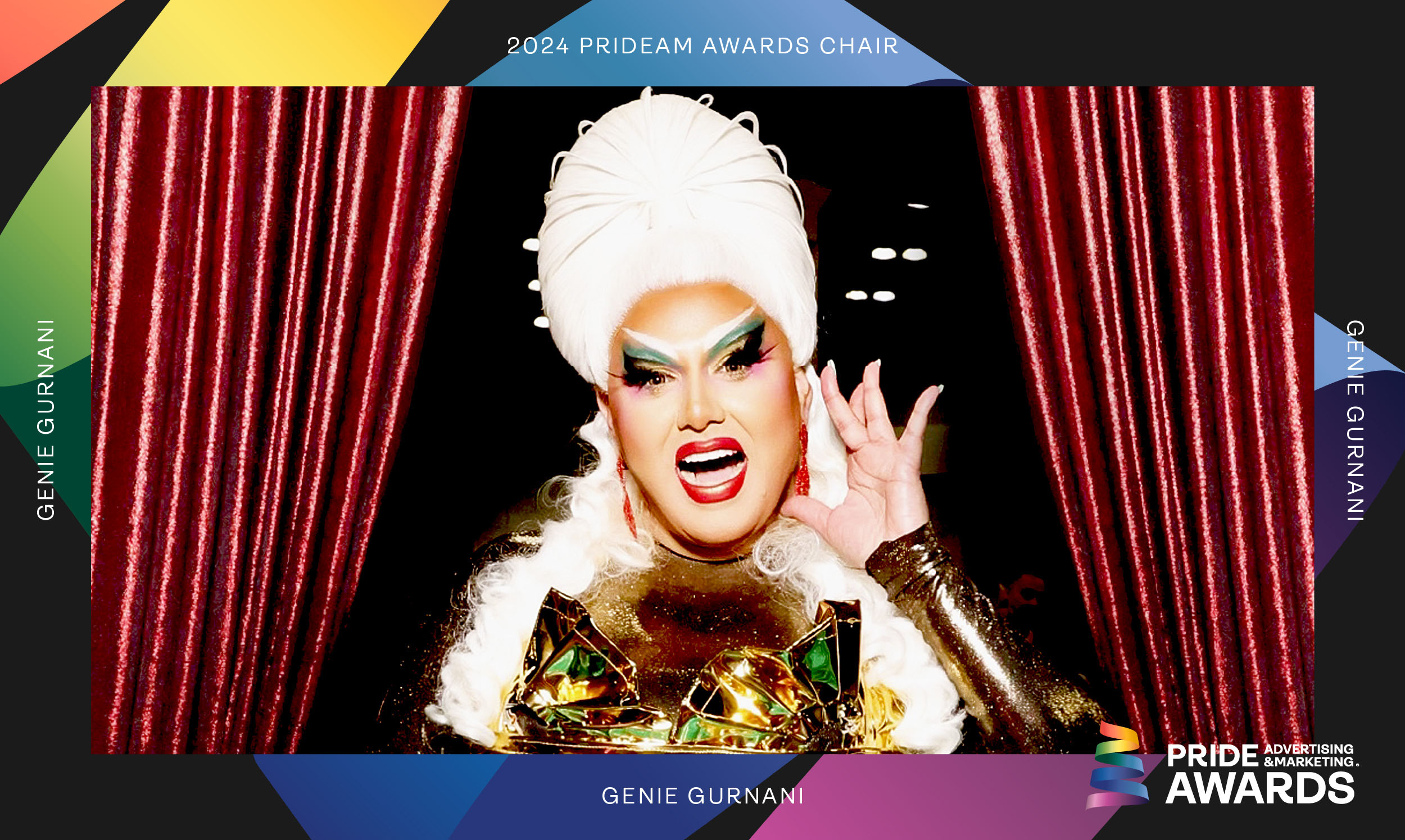PrideAM Creative Review Summer 2019
A lot of ads hinted at possible LGBTQ inclusion, but left our guests guessing.

Regular readers of PrideAM’s Creative Review will recall that our December 2018 panel bemoaned the slim pickings among the Christmas turkeys.
A lot of ads hinted at possible LGBTQ inclusion, but left our guests guessing. And there were certainly a lot of businesses playing Diversity Bingo and trying to represent everyone at once, regardless of whether or not it related to their message or resulted in a good ad.
Did our first review of 2019 provide a more wholesome feast?
Once more unto the branded breach…
We begin with the spiritual sister to an ad that scored very highly with PrideAM’s previous panels – McCain’s ‘Here’s To Love’. The follow-up is a sensitive slice of culinary closeness that carries on at a steady pace.
“I loved the original campaign,” says James Murray, EMEA Product Marketing Lead at Microsoft. “They could have pushed this further, but actually it’s nice that the message is consistent, rather than ramping it up and running the risk of taking it into parody.”
“The tone was good,” agrees Nicola Kemp, Managing Editor at BITE. “And it could work with consumer groups who aren’t usually engaged. The narration is lovely. There’s a real kindness to it.”
Jason Jarvis, Account Manager at Clear Channel, speaks from the heart: “12 year-old me, when I was questioning myself – I wished brands had been doing this kind of thing. When I was younger, no-one was doing this. Now a 12 year old kid can look at this and say they are okay.”
Jarvis is certainly not alone in feeling this way. According to UK Media Agency UM, 82% of LGBTQI women believe they might have come out sooner if brands had shown people like them in their ads when they were growing up.
Many more thumbs up for McCain then.
But they’re not the only brand getting their LGBTQ inclusive ads right. TalkTalk prove they can walk the walk when it comes to a solidly researched billboard campaign. In their ‘Broadband For Everyone – I’m A Binger’ ad, we find a remarkable revelation!
“The binger on the right is my old headmaster and was a founding member of the Gay Liberation front,” Matthew Waksman, Planning Director at Karmarama, tells us. “Also, I like this ad because it conveys a lot in a simple way.”
“The inclusion of an older couple is a positive step,” Robin Gray, Co-Founder of Gray Jones Media, points out.
“And there’s something special about Outdoor – just dropped into your life. The power of Outdoor campaigns is huge,” says Kemp.
But noting the significance of the featured couple, Gray suggests there’s more to be made of this: “”With the 50th anniversary of Stonewall surely there’s a readymade Pride campaign here.”
Scottish Widows also receive praise for their short but sweet depiction of a same-sex wedding in ‘Taking On Your Future Together’.
“Great that they decided the lesbian couple should be bi-racial,” says Tash Beecher, Senior Creative, Copywriter for Ogilvy Health & Creative Director at WPP Health Roots.
“The critical part here is the length of the ad,” Murray decides. “It’s only a 10 second ad and yet they chose to make one of two couples depicted lesbian. That’s significant.”
“And It’s such a conservative sector,” Kemp observes. “While the ad itself is perhaps not the most creatively strong, this is a brand that’s on a journey.”
“Ten years ago, this kind of brand wouldn’t have done this,” Jarvis concurs. “It’s amazing really.”
Meanwhile, River Island challenge heteronormative perceptions with their identity defying declaration ‘This Is Family’.
Kemp has real praise for this approach: “River Island’s fashion editorials are not always that great and this is an example of how inclusivity has really elevated their work.”
Referring to its label free approach, Murray suggests: “It doesn’t feel like tokenism. Even the fact that we’re asking if these women might be mother and daughter or perhaps a couple is a great thing.”
“Some might see this as ambiguous but to me those women are clearly a couple – from how they’re embracing – not mother and daughter,” says Jo Wallace, Creative Director at JWT & founder of ‘Good Girls Eat Dinner’.
“From a personal point of view, it would have been good to see more non-binary in the campaign,” says Emma Cusdin, Director of Global Butterflies.
“And it would’ve been great to have some gay men with their friends as their family, “ adds Jarvis.
Top tips for next time, but overall this campaign is positively received.
So far so good. The drive for a higher standard of inclusive ads has yielded some interesting insights and some great results. But alas, not all campaigns can pass unscathed under our panel’s watchful eyes.
BT present us with an odd close-up of Clare Balding remembering a moment which should be deeply personal. But while the reminiscences regarding her dearly departed mother-in-law are no doubt true, the delivery feels curiously phony.
“It doesn’t feel genuine,” Waksman decides.
And not uncommon when it comes to ads featuring the personal moments of LGBTQ celebrities, the significant other has been omitted.
“She seems to be speaking for Alice, but where is Alice?” asks Wallace.
“Why isn’t there a couple onscreen?” Gray chimes in.
“There’s a stark contrast when this is juxtaposed with the Talk Talk ad,” Murray points out.
“And Clare Balding’s presence is oversaturated,” suggests Gray. “She’s probably the safest celebrity lesbian out there.”
“Lots of brands are defaulting to celebrities that don’t connect,” says Kemp.
We move on in this half-hearted Hall of Fame, from BT to BA.
But British Airways’ collage of celebrity faces in ‘Made By Britain’ does not tickle our panel’s fancy either.
“The celebrity angle feels very forced,” Cusdin opines.
“It would have been better to use ordinary people rather than celebrities to really capture the message,” Gray agrees.
“Although I did like seeing Nicola Adams in there – albeit briefly,” adds Beecher.
In this scrimmage of famous faces, is there any actual trans representation?
“There’s education and normalisation in there,” acknowledges Rachel Reese, Director of Global Butterflies, “but Grayson Perry is a gender representation, not a gender identity. For people coming to this for the first time, they’re likely to think this represents trans and it doesn’t. There are plenty of trans role models in the UK that they could have used.”
And as for the blink-and-you’ll-miss-it gay couple?
“It was too quick,” says Murray “I didn’t even spot that the gay couple were holding hands.”
Remarking upon the industry’s general reluctance to show actual same-sex intimacy, Chris Day, Director at Partizan agrees: “The gay couples never kiss. Sometimes you get the impression that lesbians in ads can kiss because straight men can have a fantasy about them, but for gay men that level of intimacy is out of the question.”
Oversexualisation of lesbians for the benefit of the male gaze (misogyny, loud and clear) is indeed a very real problem, as evidenced by the recent attack on Melania Geymonat and her girlfriend, Chris, which was widely reported in the media. Teenage thugs demanded that they kiss each other for their entertainment before inflicting serious injury on the couple.
So perhaps gay couples in ads rarely kiss, but do they remove their clothes when they’re about to copulate, conjugate and fornicate? Surely a brand selling sex toys wouldn’t shy away from same-sex intimacy? Right? And yet Lovehoney’s ‘The Turn On’ demonstrates a peculiar prudishness in its otherwise outrageous erotic montage.
“The two gay guys in this ad stay clothed,” Gray declares, understandably annoyed at the double standard. “The straight couples have raunch, while the gay couple seem to throw each other round a library. You can’t have two men’s skin touching! But we can have scantily-clad ladies.”
“Trans people have sex too!” Reese announces in answer to the apparent absence of trans representation.
“Given what it’s selling, this ad could’ve done so much more!” Waksman laments.
“Does their product range actually cater for everybody?” an inquisitive Beecher queries.
The panel quickly search the website for signs of same-sex titillation, but the findings are disappointing.
“As a gay guy, Lovehoney wouldn’t feature in my awareness,” Gray announces. “What products do they sell to gay guys? In this instance, lesbians might actually have made more editorial sense.”
Thankfully, lesbians in ads are certainly breaking some new ground. In cars no less!
Vauxhall’s ‘Keeps Calm. Carries On’ depicts two mothers-to-be racing to the hospital before the bump is born. However, there are questions about how truthful this depiction of labour really is.
“You can tell there’s a lack of mothers in creative departments,” Kemp says. “But once I’d got over the ‘that’s not how it works’ factor, the bit of the ad I actually liked the most was the couple.”
“My assumption was that she was the birthing partner,” admits Murray, adding: “which speaks to my [heteronormative] bias”
Whereas Wallace’s take on the ad is much more personal.
“I thought: ‘Oh my god, they’re actually showing me!” she tells us. “It’s so unusual. It’s perhaps not the best ad, but there’s a kind of reality to it.”
We discuss the brief inclusion of a shot of a photo frame that deliberately clarifies the relationship of these highly pressured pre-parents, and there’s some praise for Vauxhall in this change of gear.
Kemp explains the significance: “It’s impressive that they did this. These ads are usually all about hyper masculine language. It’s been the core narrative for too long. I remembered this brand and thought: Oh, they might speak to me.”
With no pun intended, Cusdin adds: “This is a baby step in a conservative sector. But I do wonder how brand message relates to customer experience. A lot of brands are not looking at the connection between the Creative and the Brand Experience.”
And it’s not just when buying cars that LGBTQ experiences differ. When it comes to healthcare there is also disparity it seems.
In the NHS ‘Cervical Screening Saves Lives’, a shot of a two lesbian lovers and a clear voiceover to seal the deal makes it clear that lesbians should get screened – but what happens in reality?
“As a gay woman, I’ve been told I didn’t need one. I’ve had it loads of times,” says Wallace.
And while this ad is certainly admirable in its attempts to be inclusive, did anyone get missed out?
“They could have pushed the boundary by having a trans male in there and also looked at the heterosexual male role in this,” Cusdin suggests.
“It’s nice that there’s an older couple as the lesbians in this,” says Day. “You can be older and queer. But the lack of people that are non-white and gay bothers me. What about people who can’t watch this ad with their family because of their cultural background or religion?”
This leads to a broader conversation about where inclusion and intersectionality slip through the cracks in adland’s polished surface.
“There’s a sense within agencies that the same checkpoints don’t happen as you move into production,” explains Waksman. “People don’t want to be the voice that suddenly says something else – what about the lack of these people? Do we need to include them? There need to be more formalised checks and balances to ensure that representation happens.”
“It needs to be baked into the entire process,” Beecher agrees.
And what happens if diversity and inclusion make it all the way to the finishing line, but then get hobbled in the edit? There’s a prime example in Carling’s ‘Made Local’. The longform ad is highly praised by the panel, depicting as it does a football team with a variety of sexual orientations being coached by a trans person – but sadly, the short version tells a different tale.
“In the longform, you get to see the trans woman coaching the team, but it’s not there in the short version,” observes Reese.
“I think a lot of people would miss the fact that the coach is trans,” Day concurs.
And criticism of the awkward edit goes further still.
“I don’t think it’s clear she’s the coach,” Wallace says.
“In the shortform, they call out gay, straight, black or white – and then stop at trans,” Waksman points out.
There’s a real sense of sadness in the room that an ad with such huge potential fell at the final hurdle.
“As a brand, why take it to that point only to remove it?” Wallace asks.
“If you’ve not seen the longform version, it’s difficult to get the story at all,” Beecher remarks.
“And watching the short version, I’d almost assume it was staged,” says Gray. “In the longform it’s clear that this is a real team. I wish they’d found a better way of cutting that in the edit.”.
Day dreams of what might have been: “If it had been recut to properly include trans representation, it would’ve smashed so many more boundaries. Imagine if that’d been played in loads of pubs. It would’ve been incredible!” He continues: “It changes the whole message if we know a trans person coaches straight men and gay men. And that’s one thing I really liked – not all of the team is gay. There are some straight guys too. In the longform, they talk about the boxes and then dissolve them all. And it’s well-researched. How did they find the team, I wonder.”
Feeling there is yet more mileage in the subject matter, Kemp makes a suggestion: “It’s a very different view of masculinity. I want the team to have a series!
Carling – are you listening?
There’s an idea for the future.
‘The Future’ is certainly where Samsung Galaxy have focused their energies. We see a world of hope, improved by technological progress, from same-sex parents admiring an ultrasound to the entertainment of AR alien army battles, and it’s all pinned together by a heart-warming rendition of ‘Que Sera Sera’.
Waksman distils the message: “Technology and creativity has allowed our paths to be what they weren’t previously. What we create happens tomorrow. It’s about the environment that we create for our children.”
“It really spoke to me – excited me about the future,” says Beecher. “And they specifically chose a lesbian couple to speak to the future. I would’ve liked to see the little girl all grown up and maybe surprising me by what she’s become. Maybe not even being a woman.”
There’s praise for both the ad’s design and Samsung’s willingness to engage with LGBTQ representation
“The song choice was important. It stitches it all together,” says Gray.
“The background of this brand makes this an incredible move,” Wallace declares.
And if Samsung are bringing people together by way of battling a simulated space orc, then Amstel are using bridges – Jeff Bridges to be precise – in the unusual ‘Bridges On Bridges’.
Kemp commends the use of humour. “Ads that show diversity can often be very ‘worthy’,” she says, “but the tone of the ad doesn’t have to be serious. It can be funny.”
This echoes a recent Campaign article in which the merits of humour in advertising were discussed.
All too often, the assumption is that inclusivity must be po-faced, cauterising the comedy instincts. But the best comedians will tell you plainly that a bit of political correctness does no damage to a joke. It just means you have to be more astute in working out where the gag really lands. Is anyone being victimised? Are we laughing at people or with them?
“I love that he’s sitting in a canal,” Waksman says.
“You’ll certainly remember this,” admits Day.
“It’s intentionally slightly naff, Wallace considers, “but is also doesn’t do as much as it could do.”
There’s a brief but unambiguous lesbian clinch. The panel feels that with Amsterdam as its setting, this add could have been bolder.
Gray pinpoints the problem: “If your strapline is bringing people together, then bring people together. Show it. They only half did it.”
M&S might not go for big laughs, but there’s a cheeky smile underpinning their self-satirising ‘These are not just burgers… These are cheesy melt M&S Best Ever Burgers’.
“It’s quite safely middle class,” Cusdin observes.
“Safely middle class and very M&S,” Wallace suggests. On brand then.
“The humour derives from them satirising their own ad style,” Gray explains. “You question the relationship here and it’s not right until the end that it says ‘date’. Equally, we don’t have to be too explicit. They don’t have to be shagging in the beach hut.”
And there’s a sense that this subtlety is perhaps a step on from some of the attempts at overt representation we’ve seen earlier.
Murray has admiration for the tone of this ad: “There’s a certain beauty in the focus being on the humour, rather than that the focus is on this couple being a gay couple.”
“Representation can be incidental – not making a grand statement,” suggests Waksman.
Next up is a campaign that was both a grand statement and cause for mirth – Paddy Power’s ‘Rainbow Russians’.
But the brand doesn’t come without some controversial history.
“There was a previous Paddy Power campaign which was repulsive in its transphobia,” Reese reminds us, “so it will take a while for Paddy Power to win back the trans community. If that ever happens. But I liked this campaign. Although a UK trans role model might’ve been better.”
Is this a case of brand rehabilitation?
“A brand demonstrating that their listening is a good thing,” says Beecher. “I think It’s fine for them to come back and try again.”
“I appreciate that Paddy Power are moving in the right direction,” Cusdin admits, but adds that her trust is not fully earned just yet.
However, this campaign in itself garners considerable kudos from our panel – praised for its mix of rebellious irreverence and smartarse do-gooding.
“It’s putting two fingers up and that’s very much Paddy Power’s tone,” confirms Beecher.
As we move from the big brands to the campaigns raising awareness of LGBTQ causes, the sense of humour is still in evidence. The Peter Tatchell Foundation’s ‘The Gaydr: Screen The Blood, Not The Sexuality’ campaign sees an alarmingly blunt security guard use a made-up gadget – the Gaydr – to vet men who are about to give blood for evidence of homosexual activity. It highlights the absurdity of the laws currently preventing gay men from donating blood.
“I wasn’t allowed to give blood,” Day tells us. “And there was a hilariously homophobic nurse. This is educating you by following the security guard who personifies the laws we should reject. The people he’s talking to think it’s ridiculous and you’re as shocked as they are.”
It’s even more ridiculous when one considers the amount of people who identify as straight but have same-sex intercourse. Last year, a US survey of 24000 undergraduate students found that the last sexual partner of 12% of men and 25% of women who identify as heterosexual was same-sex (Heterosexual College Students Who Hookup with Same-Sex Partners, Arielle Kuperberg & Alicia M. Walker 2018). If those percentages are reflected in UK men and women who donate blood, then segregating men on the basis that they openly identify as gay makes no sense whatsoever.
But when it comes to this campaign, there’s a feeling that the joke may cross the line.
“There are a couple of uncomfortable moments in it,” Gray notes. “Especially for those of us who got this kind of stuff in the playground.”
“I’d say it’s about 20% too long,” Waksman agrees. “It derives so much humour mileage from saying ‘haha, you’re gay’, that it veers away from the point about blood. And I think some bits in there may make people with HIV feel not very supported.”
A subtler take on awareness and understanding is Nothing To See Here – HIV U=U (Undetectable = Untransferable). It’s charming in its mundanities; everyday people doing everyday things. And that’s the whole point. These are all perfectly unremarkable lives being enjoyed by people with HIV.
“The trans representation’s not great,” Reese decides. “Not truthfully representative – but I did like the ad overall.”
“It’s my favourite ad out of all of them,” Day informs us. “Handheld camera, natural lighting, people from all walks of life. It reminds you that these people are not sick – they’re going to lunch, doing laundry etc.”
“There’s not a lot of representation of older LGBT people with HIV,” Gray points out.
“And it tends to focus on individuals rather than couples,” says Beecher, and she continues: “I’d like to see more than one black person. In the black community, people don’t really talk about HIV very much.”
“I don’t think this cuts through like some of the most iconic campaigns for HIV awareness,” Waksman shrugs.
Our final ad, ‘Voice Of Trans’ is a co-operative effort between Global Butterflies and Brand Advance. It’s a striking visual metaphor which might not look out of place in a supernatural thriller. In a darkened space, unseen figures push against coloured membranes while haunting voices whisper and taunt. The ad intends to convey the experience of hiding trans identity and raise awareness for the Transgender Day of Visibility. The campaign allows users to hear the voice of a transgender man by asking ‘Alexa, open the voice of trans’ on any device.
“The ad is so visceral!” Beecher remarks.
“The pushing as a metaphor for internal battles – purely as an artistic execution, it’s really interesting,” Gray approves.
“And it’s not a narrative that we’ve seen enough about,” Kemp adds.
“It’s reminds me of being young and in the closet,” Day says, drawing comparisons with his own struggles.
Reese explains a little of the background: “Everyone put time in for free. The Alexa bit went live, and so did the website, but no social media push as yet.”
“If I was to critique it now, I’d ask where the positivity of the trans experience is. International Trans Day of Visibility should be a seen as a positive day,” admits Cusdin.
“At the same time, you can’t just pass it off as all sunshine and rainbows and everything’s fantastic,” Gray suggests.
Day agrees it’s the correct approach: “I think this had to be dark.”
Understandable when you consider that in the UK, 12% of trans employees report that they have been attacked by a colleague or customer over the past year, with 51% choosing to hide their identity for fear of retribution.
And what we do we see when we consider the advances in trans acceptance and the future of this striking campaign?
“Maybe more in year two,” Waksman says with a knowing look.
So what did we learn?
– The ads that appeared in early 2019 suggest that some brands are getting better at speaking directly to an LGBTQ audience. Intersectional representation is also on the up, but still needs huge improvement.
– Lesbians are finally getting a little bit of airtime, but trans and non-binary representation is still lacking, while bi representation remains invisible.
– LGBTQ couples are still being represented with censored, unrealistic physical interaction. While straight couples kiss, fumble and flaunt, LGBTQ couples barely touch.
– Humour is welcomed. Inclusive representation does not have to be dour, dreary or bland. Just make sure the joke lands well and doesn’t victimise or employ grim stereotypes.
– Make sure the edit still hits all the right notes!!
– Agencies need to adopt more formalised processes and checkpoints to ensure that their work is inclusive and Brands need to ensure that the inclusion they are pitching for is actually played out in customer experience.
Written by Phil Clements, Member and Spokesperson for PrideAM




